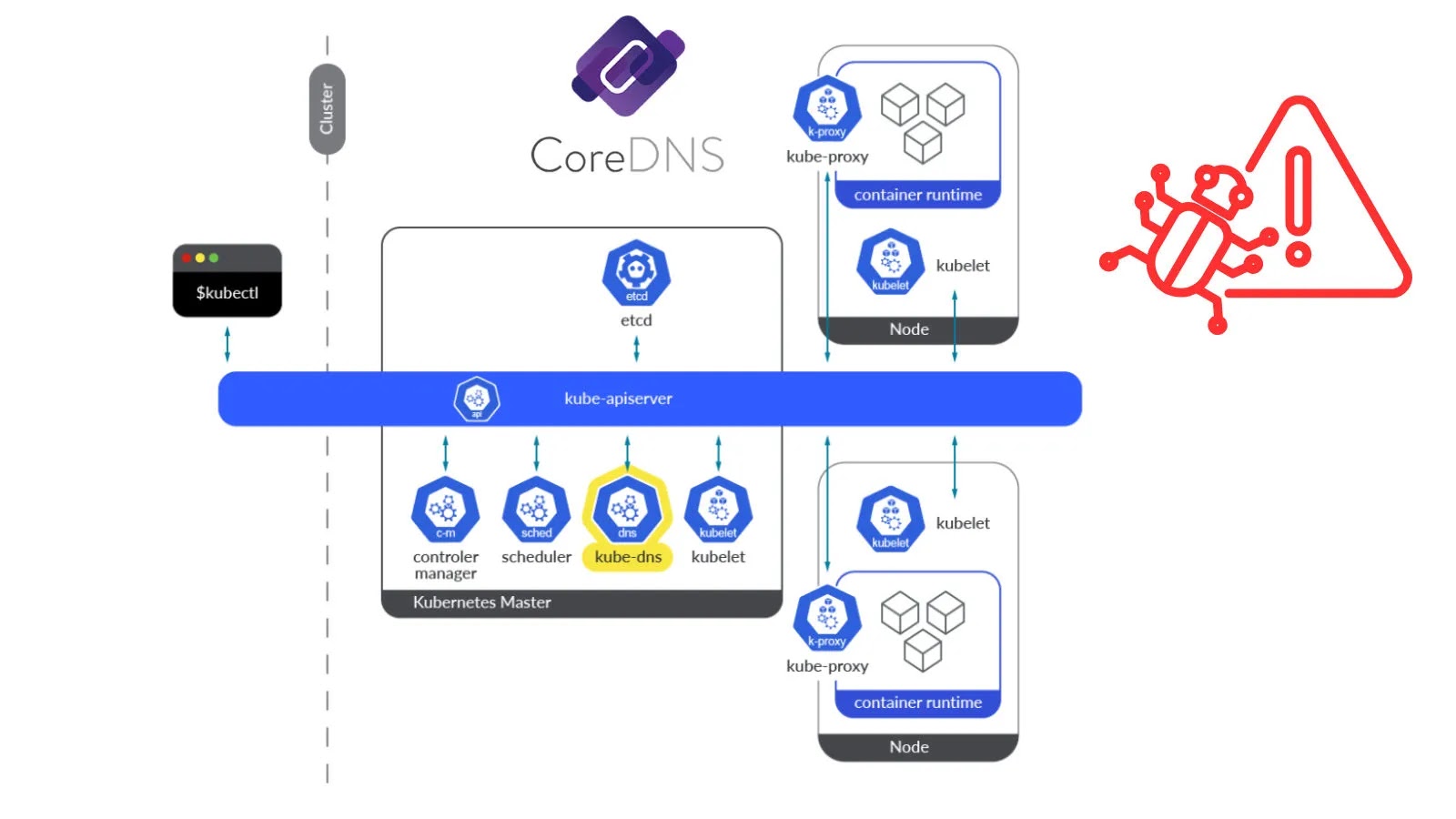
CoreDNS Vulnerability Let Attackers Pin DNS Cache And Deny Service Updates
DNS resolution is the silent workhorse of the internet, a critical component that translates human-readable domain names into machine-friendly IP addresses. When this foundational service is compromised, the implications can be severe, ranging from application outages to widespread service disruptions. A recent vulnerability unearthed in CoreDNS, a widely adopted DNS server often used within Kubernetes environments, underscores this very risk. This flaw could be exploited to pin DNS cache entries, effectively creating a denial-of-service condition for critical service updates. Understanding this vulnerability is paramount for any organization leveraging CoreDNS.
The CoreDNS Vulnerability: Unpacking the Cache Pinning Attack
The core of this vulnerability lies within the CoreDNS etcd plugin, a component frequently used for dynamic service discovery and configuration within containerized environments. Specifically, the flaw stems from a critical logic error: CoreDNS misinterprets an etcd lease ID as a Time-To-Live (TTL) value. This misinterpretation creates a dangerous loophole for attackers.
In a standard DNS lookup, the TTL value dictates how long a DNS resolver can cache a particular record. Once the TTL expires, the resolver must query the authoritative server again for updated information. However, with this CoreDNS vulnerability, an attacker can manipulate the system into setting an arbitrarily high, or even infinite, TTL for malicious or outdated DNS records. By injecting a specially crafted etcd lease ID that’s misinterpreted as an extremely long TTL, an attacker can effectively “pin” a false DNS entry in the cache of affected CoreDNS instances.
Impact and Consequences: Denying Service Updates
The primary impact of this cache pinning vulnerability is a denial-of-service (DoS) condition specifically targeting service updates. Consider a scenario where an organization deploys a new version of a critical application or updates the IP address of a backend service. If an attacker has exploited this CoreDNS flaw to pin an old or incorrect DNS entry, CoreDNS will continue to serve the outdated information from its cache, despite legitimate updates being published.
- Application Outages: Users and other services attempting to connect to the updated application will be directed to non-existent or incorrect endpoints, leading to application downtime.
- Service Instability: Internal services relying on CoreDNS for discovery may fail to locate or connect to the correct updated services, causing cascading failures within the infrastructure.
- Configuration Drifts: Persistent incorrect DNS resolution can lead to significant configuration drifts, making troubleshooting and incident response considerably more complex.
- Reduced Resilience: The ability to deploy timely updates is a cornerstone of resilient systems. This vulnerability directly undermines that resilience by preventing new configurations from propagating correctly.
Technical Details and CVE Identification
While the initial report outlines the core issue, it’s crucial to identify the specific vulnerability identifier for tracking and remediation. This CoreDNS vulnerability is tracked under CVE-2023-39325. Organizations should refer to the official CVE details for the most up-to-date information, affected versions, and proposed patches from the CoreDNS project.
Remediation Actions and Best Practices
Addressing this CoreDNS vulnerability requires immediate attention and adherence to cybersecurity best practices. For organizations utilizing CoreDNS, particularly within Kubernetes environments, the following steps are crucial:
- Update CoreDNS: The most critical step is to update your CoreDNS deployments to the patched versions. Always prioritize security updates and ensure your update channels are configured to receive them promptly. Consult the official CoreDNS release notes for the specific versions that contain the fix for CVE-2023-39325.
- Monitor CoreDNS Logs: Implement robust logging and monitoring for your CoreDNS instances. Look for unusual query patterns, high cache hit rates for specific records that should be dynamic, and errors related to etcd interactions.
- Implement Access Controls for etcd: Restrict access to your etcd clusters. Ensure that only authorized components and users can write to etcd. Implement strong authentication and authorization mechanisms to prevent unauthorized manipulation of lease IDs and other data.
- Network Segmentation: Isolate your CoreDNS and etcd infrastructure within segmented networks. This limits the attack surface and prevents unauthorized internal or external entities from directly interacting with these critical components.
- Regular Security Audits: Conduct periodic security audits of your DNS infrastructure and other critical services. This includes reviewing configurations, access logs, and applying the principle of least privilege.
- Utilize Read-Only DNS Zones: Where possible, utilize read-only DNS zones for static records to minimize the potential for manipulation if attackers gain partial access.
Tools for Detection and Mitigation
Leveraging appropriate tools is essential for maintaining a strong security posture. While direct detection of this specific logic error exploitation might require detailed log analysis, the following tools can aid in overall DNS security and health:
| Tool Name | Purpose | Link |
|---|---|---|
| CoreDNS | Primary DNS server for Kubernetes; ensure updated versions are deployed. | https://coredns.io/ |
| Prometheus & Grafana | Monitoring and alerting for CoreDNS metrics (e.g., query rates, error rates, cache hits). | https://prometheus.io/ https://grafana.com/ |
| Falco | Runtime security for Kubernetes, can detect unusual process behavior or file access related to CoreDNS or etcd. | https://falco.org/ |
| Terraform (or other IaC) | Infrastructure as Code for consistent and secure deployment of CoreDNS and etcd configurations. | https://www.terraform.io/ |
Conclusion: Strengthening DNS Resilience
The CoreDNS vulnerability, CVE-2023-39325, serves as a stark reminder of the often-overlooked criticality of DNS infrastructure, particularly in dynamic environments like Kubernetes. An attacker’s ability to pin DNS cache entries and deny service updates can have profound implications for application availability and system stability. Proactive patching, diligent monitoring, and stringent access controls for supporting services like etcd are non-negotiable. By prioritizing these actions, organizations can significantly bolster the resilience of their DNS infrastructure and safeguard against disruptive attacks that exploit fundamental service delivery mechanisms.





